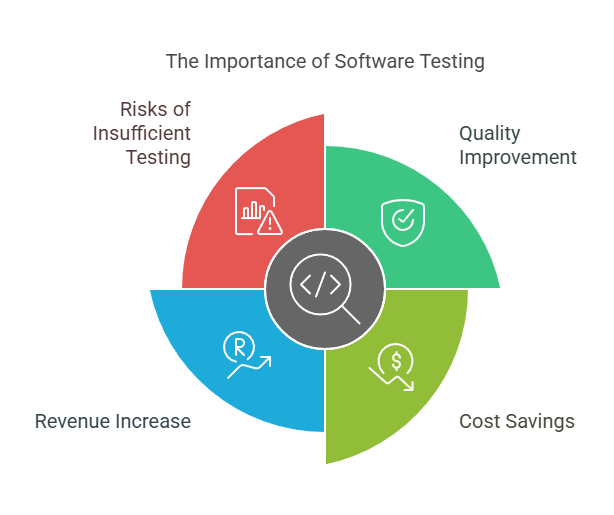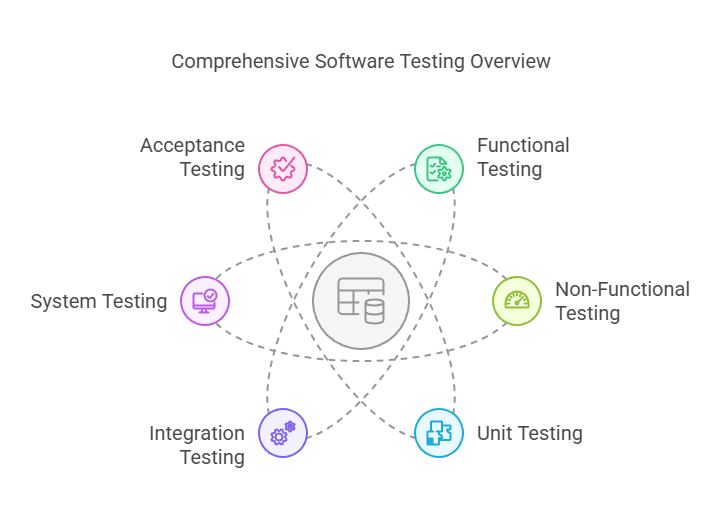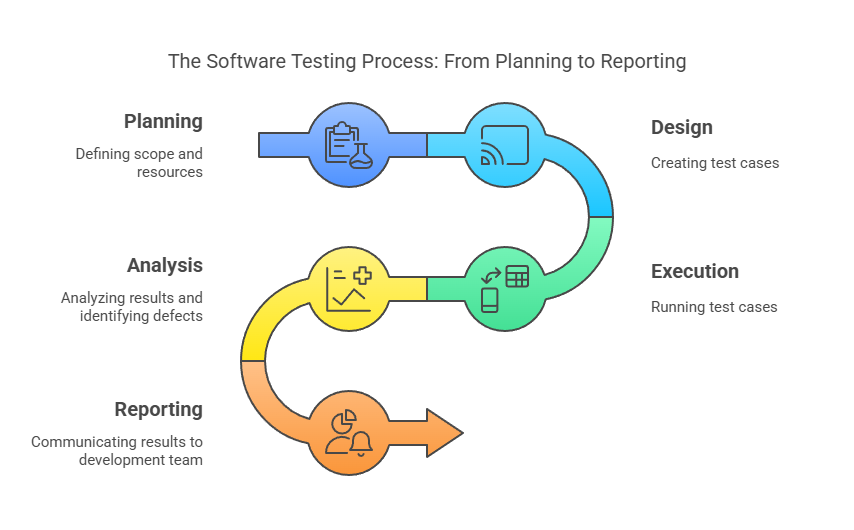software testing At karyera


Software testing is the process of evaluating a software product to ensure it meets the requirements and is free of defects. It involves executing a program or application with the intent of finding software bugs (errors or other defects that may impair its performance) and verifying that it meets the requirements.
Software testing is an essential part of the software
development lifecycle. It helps to improve the quality of software, save money
on expensive bug fixes, and increase revenue by providing a product customers
enjoy. Insufficient testing or skipping testing completely can lead to severe
drops in quality, delays in production, and significant damage to the company's
reputation and revenue.
There are many different types of software testing, including:
- Functional
testing: This type of testing verifies that the software meets the
specified requirements.
- Non-functional
testing: This type of testing evaluates aspects of the software that
are not related to specific functions, such as performance, security, and
usability.
- Unit
testing: This type of testing verifies that individual components of
the software are working correctly.
- Integration
testing: This type of testing verifies that different components of
the software are working together correctly.
- System
testing: This type of testing verifies that the software as a whole is
working correctly.
- Acceptance
testing: This type of testing verifies that the software meets the
customer's needs.
The software testing process typically involves the following steps:
1. Planning: This stage involves defining the scope of the testing, identifying the resources that will be needed, and developing a test plan.
2. Design: This stage involves creating test cases that will be used to test the software.
3. Execution: This stage involves running the test cases and recording the results.
4. Analysis: This stage involves analyzing the results of the testing and identifying any defects that need to be fixed.
5. Reporting: This stage involves reporting the results of the testing to the development team.
Software testing is an iterative process. It is typically performed throughout the software development lifecycle, from the initial planning stages to the final release of the software.

Types of Automation Testing
Automation testing is a software testing technique that uses specialized tools to execute pre-written test cases, comparing actual outcomes with expected results. This process helps to reduce manual effort, increase test coverage, and improve the overall efficiency of software testing.
- Increased
efficiency and speed of testing
- Reduced
manual effort and human error
- Improved
test coverage and accuracy
- Early
detection of defects
- Faster feedback and release cycles
